Eaton Transmission T-955 Service Manual

Service Manual
Fuller Medium Heavy Transmissions
TRSM0202
October 2007
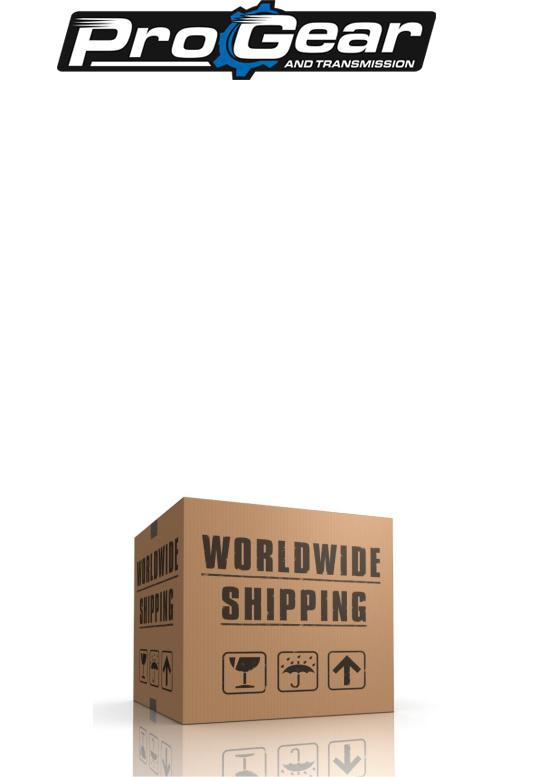
For parts or service call us Pro Gear & Transmission, Inc.
1(877) 776-4600
(407)872-1901 parts@eprogear.com
906 W. Gore St. Orlando, FL 32805


Service
Manual
·Operation
• Lubrication ·Maintenance ·Repair
T-955
Series
Fuller®
Twin Countershaft
Transmissions
©Eaton Corporation
Transmission Div. -1973
Eaton Corporation
Transmission Division
Kalamazoo, Michigan
l+MH·+•...__________________________
Table of Contents
Model Designations ............................. |
.3 |
Description .................................... |
4 |
Specifications ................................. |
.4 |
Gear Ratios ................................... |
.5 |
Operation ..................................... |
6 |
Lubrication ................................... |
10 |
Preventive Maintenance Check Chart ................ |
12 |
Disassembly Precautions ........................ . |
14 |
Disassembly Instructions ......................... |
15 |
I. Shifting Controls |
|
A. Low Gear Shift Air System (T-955ALLModels) .. . |
16 |
B. Gear Shift Lever Housing Assembly .......... . |
17 |
C. Shift Bar Housing Assembly ................ . |
18 |
II. Clutch Housing, Companion Flange and |
|
Auxiliary Section |
|
A. Removal of the Clutch Housing .............. |
22 |
B. Companion Flange or Yoke ................. |
23 |
C. Auxiliary Rear Section ..................... |
23 |
III. Front Section |
|
A. Auxiliary Drive Gear Assembly ............... |
24 |
B. Left Reverse Idler Gear Assembly ............. |
26 |
C. Right Countershaft Bearing Removal .......... |
28 |
D. Mainshaft Assembly ....................... |
29 |
E. Left Countershaft Bearing Removal .......... . |
31 |
F. Input Shaft and Drive Gear Assembly ......... . |
32 |
G. Countershaft Assemblies ................... . |
34 |
H. Right Reverse Idler Gear Assembly ............ |
35 |
IV. Auxiliary Section - T-955AL, T-955GL Models |
|
A. First-reverse Speed Sliding Clutch Gear ......... |
36 |
B. Auxiliary Countershaft Assemblies ........... . |
37 |
C. First Speed Gear, Output Shaft |
|
and Rear Bearing Assembly ................ . |
38 |
V. Auxiliary Section - T-955ALL Models |
|
A. Auxiliary Cou~tershaft Assemblies ............ |
40 |
B. Sliding Clutch and First Speed Gear .......... . |
41 |
C. Low Gear Shift Cylinder ................... . |
42 |
D. Range Mainshaft .......................... |
44 |
E. Low Speed Gear, Output Shaft |
|
and Rear Bearing Assembly ................. |
45 |
Inspection ................................... |
.46 |
Gasket Locations .............................. |
.47 |
Torque Ratings ............................... |
.48 |
Reassembly Precautions .......................... |
49 |
Reassembly Instructions ........................ |
.50 |
I. Auxiliary Section - T-9 55 ALL Models |
|
A. Low Speed Gear and Output Shaft. ........... |
.50 |
B. Rear Bearing Assembly .................... |
.52 |
C. Low Gear Shift Cylinder Assembly ........... |
.54 |
D. Range Mainshaft and First Speed Gear ......... |
56 |
E_ Auxiliary Coup.tershafts ................... |
.58 |
II. Auxiliary Section -T-955AL, T-955GL Models |
|
A. First Speed Gear and Output Shaft ............ |
60 |
B. Output Shaft and Rear Bearing Installation |
.....62 |
C. Auxiliary Countershaft Assemblies ............ |
64 |
D. First-reverse Speed Sliding Clutch ............. |
65 |
III. Front Section |
|
A. Right Reverse Idler Gear Assembly ............ |
66 |
B. Countershaft Assemblies .................... |
68 |
C. Drive Gear Assembly ....................... |
70 |
D. Left Countershaft Installation ................ |
73 |
E. Mainshaft Assembly ....................... |
74 |
F. Right Countershaft Installation ............... |
81 |
G. Left Reverse Idler Gear Assembly ............. |
82 |
H. Auxiliary Drive Gear Assembly ............... |
84 |
IV. Clutch Housing, Companion Flange |
|
and Auxiliary Section |
|
A. Clutch Housing ........................... |
86 |
B. Auxiliary Rear Housing ..................... |
87 |
C. Companion Flange or Yoke ................. |
87 |
V. Shifting Controls |
|
A. Shift Bar Housing Assembly ................. |
88 |
B. Gear Shift Lever Housing Assembly ........... |
92 |
C. Low Gear Air System (T-955ALL Models) ...... |
93 |
Air System .................................... |
94 |
Mainshaft Axial Clearance Chart ................... |
9 5 |
Tool Reference ................................ |
96 |
2
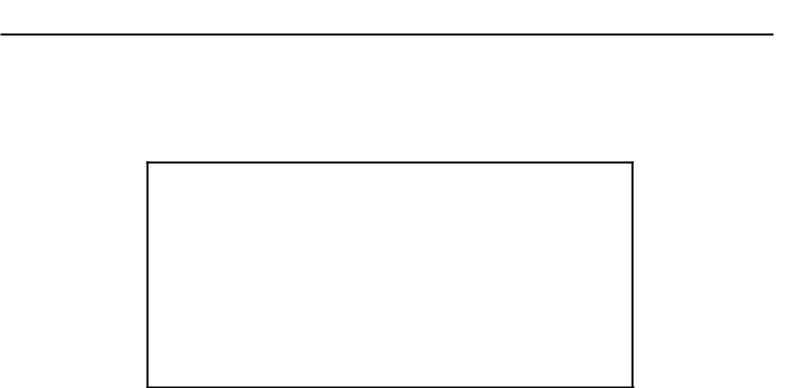
Model Designations
T-955AL - Six speed, direct drive.
T0-955AL - Six speed, overdrive.
T-955G L - Six speed, gathered ratios.
T-955ALL - Seven speed, direct drive.
T0-955ALL- Seven speed, overdrive.
Unless stated otherwise, this manual applies to all models in the T-955 series which includes: T-955AL, T0-955AL, T-955ALL, T0-955ALL, T-955GL
NOTE
Illustrated parts lists with parts numbers are available upon request.
3

Description
These 950 lb.-ft. torque capacity units are designed to take advantage of the power curve of the high torque rise engines and to give the ratio spread necessary for construction vehicles.
The T-955AL and T0-955AL six speed models have ratios for construction vehicles, especially dump truck operation. The 11.17 low gear provides ample reduction for starting heavy loads, yet can be shifted progressively without stopping vehicle. The two reverse ratios, progressively shifted, provide fast backing speeds plus deep reduction for job-site spotting. The T0-955AL overdrive model gives a .65 overdrive ratio where heavy duty drive axles are needed and ratio choices are limited.
The T-955ALL and T0-955ALL seven speed models, especially suited for both dump and mixer operations, provide the reduction for extremely adverse conditions, also ratios for curbing and paving. Three reverse ratios give a range for stockpiling, job-site work and load spotting. The T0-955ALL overdrive model is available to obtain highway speeds when heavy duty axle ratio choice is limited.
The T-955GL model has special "gathered" ratios for vehicles operating primarily on highway.
Specifications
Speeds
T-955AL, GL: 6 forward speeds, 2 reverse T-955ALL: 7 forward speeds, 3 reverse
Power Take-Off
Right Side: regular duty, 6-bolt type 45 tooth PTO gear
Bottom: heavy duty, 8-bolt type 47 tooth PTO gear
PTO Gear Relative Speed to Input R.P.M.
T-955AL: .533, right side and bottom T-955GL: .700, right side and bottom T0-955AL: .820, right side and bottom T-955ALL: .533, right side and bottom T0-955ALL: .820, right side and bottom
Torque Rating 950 lb.-ft.
Clutch Housing Size SAE No. 1, 2 aluminum
Length (from face of clutch housing to end of splines on tailshaft)
T-955AL, GL: 30 7/8"
T-955ALL: 34 1/16"
Weight
T-955AL, GL: 580 lbs.
T-955ALL: 646 lbs.
Oil Capacity (pints)
T-955AL, GL: 25
T-955ALL: 28
4

|
|
GEAR RATIOS |
|
|
|
|
T-955AL |
|
T0-955AL |
|
T-955GL |
SPEED |
RATIO %STEP |
SPEED |
RATIO %STEP |
SPEED |
RATIO %STEP |
6th |
1.00 |
6th |
.65 |
6th |
1.00 |
|
54% |
|
54% |
|
31% |
5th |
1.54 |
5th |
1.00 |
5th |
1.31 |
|
55% |
|
54% |
|
43% |
4th |
2.38 |
4th |
1.54 |
4th |
1.87 |
|
58% |
|
58% |
|
60% |
3rd |
3.75 |
3rd |
2.44 |
3rd |
2.99 |
|
69% |
|
69% |
|
62% |
2nd |
6.35 |
2nd |
4.13 |
2nd |
4.84 |
|
76% |
|
76% |
|
76% |
1st |
11.17 |
1st |
7.26 |
1st |
8.51 |
Hi Rev. |
6.48 |
Hi Rev. |
4.21 |
Hi Rev. |
4.94 |
Lo Rev. 11.40 |
Lo Rev. |
7.41 |
Lo Rev. |
8.69 |
|
|
|
GEAR RATIOS |
|
|
|
|
|
|
T-955ALL |
|
T0-9SSAL |
|
|
|
SPEED |
RATIO %STEP |
SPEED |
RATIO %STEP |
||
|
6th |
1.00 |
6th |
.65 |
|
|
|
|
54% |
|
54% |
|
|
|
5th |
1.54 |
5th |
1.00 |
|
|
|
|
55% |
|
54% |
|
|
|
4th |
2.38 |
4th |
1.54 |
|
|
|
|
58% |
|
58% |
|
|
|
3rd |
3.75 |
3rd |
2.44 |
|
|
|
2nd |
69% |
|
69% |
|
|
|
6.35 |
2nd |
4.13 |
|
|
|
|
|
76% |
|
76% |
|
|
|
1st |
11.17 |
1st |
7.26 |
|
|
|
|
138% |
|
138% |
|
|
|
Lo |
26.54 |
Lo |
17.25 |
|
|
|
Hi Rev. |
6.48 |
Hi Rev. |
4.21 |
|
|
|
Lo Rev. |
11.40 |
Lo Rev. |
7.41 |
|
|
|
Lo-Lo Rev. 27 .09 |
Lo-LoRev. 17.61 |
||||
|
|
|
|
|
|
|
5
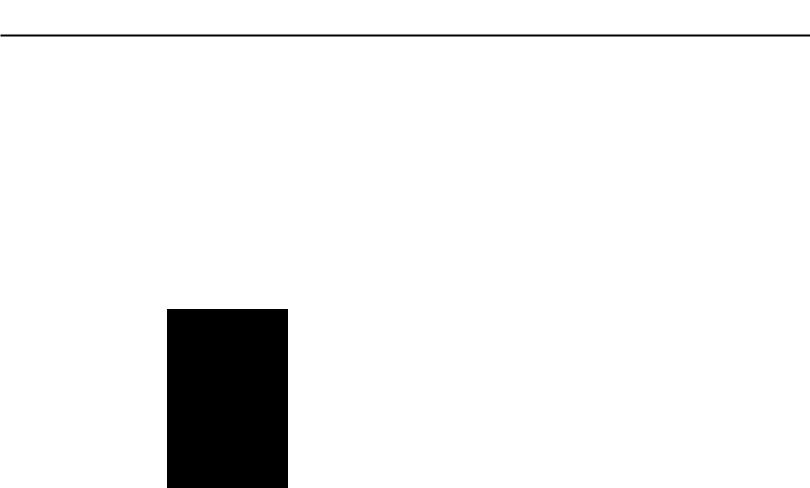
Operation
In the following instructions it is assumed that the driver is familiar with motor trucks and tractors, and that he can coordinate the necessary movement of the shift lever and clutch pedal to make progressive and selective gear engagements in either direction, up or down.
Six Speed Models
T-955AL, T-955GL & T0-955AL Models
To shift from neutral to: 1st - shift thru 2nd.
Reverse lo- shift thru reverse-hi
On overdrive model T0-955AL the 5th & 6th speed positions are reversed
1.Start engine with gear shift lever in the neutral position.
2.To start vehicle moving, shift into the 1st speed position. This is done by moving the gear shift lever through the 2nd speed gear position with the clutch disengaged (it may be necessary to feather clutch to move lever into 2nd). Move lever through the 2nd speed gear position to the extreme left, then push lever forward into 1st gear.
NOTE: While moving the lever into first you may feel the neutral position between 2nd and 1st gears. This neutral position can be used at stop lights, etc.
3.After vehicle has gained sufficient speed in 1st gear, shift lever into the 2nd speed position.
4.Shift from 2nd to 3rd by moving lever from the extreme right in the second speed gear position into the 3rd speed position.
NOTE: A spring and plunger will move the gear shift lever to the extreme right in the 2nd speed gear position. When shifting from 1st to 2nd the gear shift lever will be moved to the extreme right position; when shifting from 2nd to 1st, operator must move lever to the extreme left position while in 2nd gear position against the spring pressure.
5.Shift on upward through 4th, 5th and 6th in the shift pattern. On overdrive models, the 5th and 6th speed gear positions are reversed.
Reverse and Lo Reverse
To shift into reverse, move the gear shift lever into the reverse gear position.
To shift into Lo reverse; first shift into reverse, then move lever to the extreme left and forward into the lo reverse position (it may be necessary to feather clutch to move lever into reverse.)
6

Seven Speed Models
T-955ALL and T0-955ALL Models
To shift from neutral to: 1st - shift thru 2nd.
Shift lo-lo selector lever to "In" position for lo-lo and lo-lo reverse.
Overdrive T0-955ALL models the 5th and 6th speed positions are reversed.
1.Start engine with gear shift lever in the neutral position.
2.To start vehicle moving under normal conditions, shift into the 1st speed position. This is done by moving the gear shift lever through the 2nd speed gear position with the clutch disengaged (it may be necessary to feather clutch to move lever into 2nd.) Move lever through the 2nd speed gear position to the extreme left, then push lever forward into 1st gear.
NOTE: While moving the lever into first you may feel the neutral position between 2nd and 1st gears. This neutral position can be used at stop lights, etc.
3.To shift into Lo-Lo under adverse conditions: To shift into Lo-Lo the gear shift lever must be in the 1st speed gear position. Switch the Lo-Lo selector from "Out" to "In" and immediately disengage and re-engage clutch; transmission will shift into Lo-Lo. To shift out of Lo-Lo, switch selector from "In" to "Out" and immediately disengage and re-engage clutch.
4.After vehicle has gained sufficient speed in 1st gear, shift lever to the 2nd speed position.
5.Shift from 2nd to 3rd by moving lever from the extreme right in the second speed gear position into the 3rd speed gear position.
NOTE: A spring and plunger will move the gear shift lever to the extreme right in the 2nd speed gear position: when shifting from 1st to 2nd the.gear shift lever will be moved to the extreme right position; when shifting from 2nd to 1st, operator must move lever to the extreme left position while in 2nd gear position against the spring pressure.
6.Shift on upward through 4th, 5th and 6th in the shift pattern. On overdrive models, the 5th and 6th speed gear positions are reversed.
Reverse, Reverse Lo and Lo-Lo
To shift into reverse, move the gear shift lever into the reverse gear position.
To shift into Lo reverse: first shift into reverse, then move lever to the extreme left and forward into the Lo reverse position (it may be necessary to feather clutch to move lever into reverse.)
To shift into Lo-Lo reverse: first shift into Lo reverse, then switch the Lo-Lo selector from "Out" to "In" and immediately disengage and re-engage clutch. To shift from Lo-Lo reverse to Lo reverse: switch selector from "In" to "Out" and immediately disengage and re-engage clutch.
NOTE: Reverse gears can be shifted progressively without stopping vehicle.
Alternative Method of Upshifting the T-955ALL
and T0-955ALL Transmissions
1.As in the previous instructions, start vehicle with gear shift lever in neutral and shift into the Lo-Lo position, moving the selector switch to the "In" position.
2.After vehicle has gained sufficient momentum, shift upward through the shift pattern through 2nd, 3rd, 4th and 5th to 6th, KEEPING THE SELECTOR SWITCH TO THE "IN" POSITION.
3.When in 6th and ready for the next UPSHIFT, switch the selector switch from "IN" to "OUT" and immediately move the gear shift lever to the 4th speed gear position. Remember this is an upshift.
4.Continue upshifting through 5th and 6th.
NOTE: When using this method of shifting (by using the shift pattern with the selector switch to "JN") it is necessary to move the gear shift lever two gear positions lower to make the upshift. For instance, if you are in 6th, switch selector from "IN" to "OUT", and move gear shift lever to 4th; if you are in 5th, switch selector from "IN" to "OUT" and move gear shift lever to 3rd.
U pshift Gear Positions Using Alternative Method of
Shifting
6th
5th 6th __ 4th
5th _2!.--3rd
4th
3rd Shifted with selector to "OUT"
2nd
Lo-Lo
t
Shifted with Selector to "IN"
7

To Convert From T-955AL To
T0-955AL, or T-955ALL To T0-955ALL
To convert from an T-955AL or T-955ALL to an overdrive model T0-955AL or T0-955ALL the fifth speed gear on the mainshaft and mating gears, one on each countershaft, are interchanged with the main drive gear and mating countershift drive gears.
The transmission front section must be completely disassembled to make the change as the drive gear on each
countershaft must be removed. When reassembling make sure gear hubs are in the right position as described in the detailed reassembly section of this manual.
Extra parts, other than gaskets, are not needed to make the conversion. A new drive gear bearing nut may be needed as this part may be damaged during removal.
INTERCHANGE THESE TWO SETS OF GEARS.
(3 Gears in each set)
FRONT SECTION OF T-955AL AND T-955ALL
8

Special Procedure For
Changing Clutch (Input) Shaft
In some cases in field repair it may be necessary to replace only the input shaft due to clutch wear on the splines.
In these instances the input shaft can be removed without disassembling the transmission other than removing the shifting bar housing. Removal of the clutch housing is optional. Following is the detailed procedure:
Disassembly
1.Remove gear shift lever housing and shift bar housing from transmission.
2.Remove the front bearing cover.
3.Engage the mainshaft sliding clutches in two gears and remove the drive gear bearing nut.
4.Move the drive gear assembly as far forward as possible and remove the drive gear bearing.
5.Remove the washer from input shaft.
6.From the front, remove the snap ring from ID of drive gear.
7.Pull the input shaft forward and from splines of drive gear.
Reassembly
1.Install new input shaft into splines of drive gear just far enough to expose snap ring groove in ID of drive gear.
2.Install snap ring in ID of drive gear.
3.Install washer on shaft.
4.IMPORTANT - Move the sliding clutch gear forward to contact end of input shaft in hub of drive gear. Block between rear of sliding clutch and front of the fifth speed gear. When installing bearing this will hold input shaft in position to seat the bearing properly.
5.Install drive gear bearing on shaft and into case bore, making sure blocking remains in place.
6.Remove blocking from mainshaft and install the drive gear bearing nut, left-hand thread. Use Loctite sealant on threads of nut and shaft.
7.Peen nut into milled slots in shaft.
8.Re-install front bearing cover, shifting bar housing and gear shift lever housing.
NOTE: The above instructions are for changing the input shaft only. To change the drive gear, complete disassembly of the front section must be made.
9
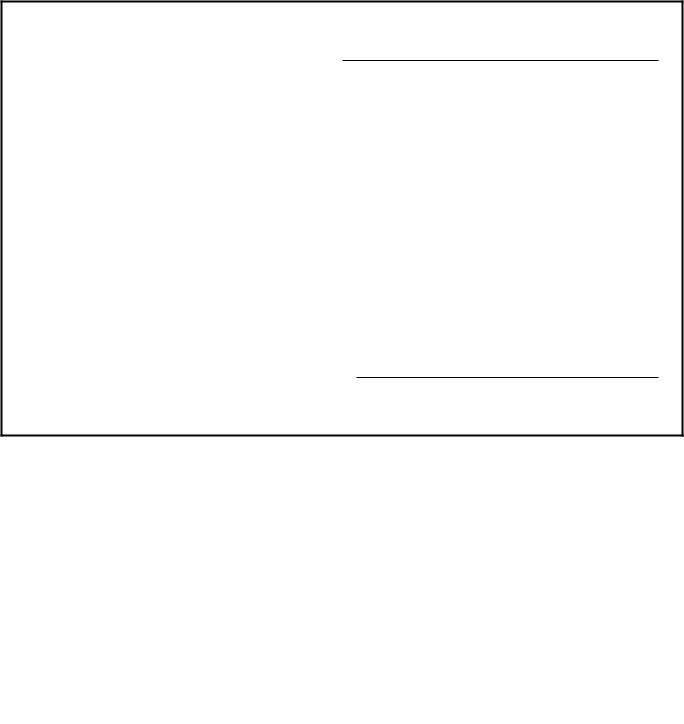
Ei.!j1ffo.l,I____________________________
Lubrication
RECOMMENDED LUBRICANTS
Heavy-duty engine oil. Make sure to specify heavyduty type meeting MIL-L-2104B specifications.
Mineral gear oil inhibited against rust, oxidation and foaming.
Extreme pressure oils under some conditions might form carbon deposits on gears, shafts, bearings and synchronizer discs, and may also glaze friction surfaces of synchronizer discs - conditions which will result in transmission malfunction and premature failure. It is suggested that if these conditions exist, and E.P. oil is being used, a change should be made to mineral oil or heavy-duty engine oil as recommended.
ON-HIGHWAY VEHICLES
Type |
Grade |
Temperature |
|
|
|
Heavy Duty Engine Oil |
SAE 50 |
Above + 1o°F. |
MIL-L-2104B |
SAE 30 |
Below + 1ooF. |
|
|
|
Mineral Gear Oil |
SAE90 |
Above + I0°F. |
Rand 0 Type |
SAE 80 |
Below + 1o°F. |
|
|
|
Mild E.P. Oil (except |
SAE90 |
Above + 1o°F. |
Sulfur-chlorine-lead type) |
SAE 80 |
Below + 1o°F. |
MIL-L-2105B |
|
|
|
||
OFF-HIGHWAY AND MINING EQUIPMENT |
||
|
|
|
Heavy Duty Engine Oil |
SAE 50 |
Above + 1o°F. |
MIL-L-2104B |
SAE30 |
Below +1o°F. |
|
|
|
Special Recommendation - For extreme cold weathe1 where temperature is consistently below o°F.
Heavy Duty Engine Oil |
SAE 20W Below ooF. |
MIL-L-2104B |
|
|
|
FULLER TRANSMISSIONS are designed so that the internal parts operate in a bath of oil circulated by the motion of gears and shafts. Grey iron parts have built-in channels where needed, to help lubricate bearings and shafts.
Thus, all parts will be amply lubricated if these procedures are closely followed:
1.Maintain oil level. Inspect regularly.
2.Change oil regularly.
3.Use the correct grade and type of oil.
4.Buy from a reputable dealer.
To keep the gear oil clean between oil changes use the Fuller Transmission |
|
||
Gear Oil Filter which can be attached to the right-side power take-off open- |
|
||
ing. This assembly includes a replaceable |
filter element that removes |
the |
|
accumulation of metallic particles, road |
dirt and grit deposited in |
the |
Fuller Transmission Gear Oil Filter |
lubricant. |
|
|
|
10

Draining Oil
To drain the transmission remove the drain plug at the bottom of the front case. Drain oil when transmission is warm. After the transmission has been drained and before it is refilled, the case should be thoroughly flushed with a clean flushing oil or kerosene. Do not use flushing compound if unit is equipped with side or front mounted pressure lubrication pumps unless pump is removed and opening covered with plate. Clean both drain plugs before reinstalling.
Refilling
In order to assure complete filling of the transmission with oil, the following two methods may be used:
1)At any inclination: Plug the fill hole in the front case and add entire quantity through opening in shift bar housing. The transmission must be completely drained before using this method in order to avoid overfilling.
2)At upgrade inclinations from 0 through 3 degrees: Add sufficient quantities through the fill hole to level the oil at the bottom of the fill hole.
Do not overfill. Overfilling will cause the oil to be forced out of the case through the mainshaft openings.
Adding Oil
It is recommended that types and brands of oil not be intermixed because of possible incompatibility.
Additions of oil during servicing operations should be made through the fill hole to level the oil at the bottom of the fill hole with the transmission at a 0 to 3 degree upgrade angle.
Operating Temperature
It is imperative that the operating temperature of the transmission does not exceed 250°F.
Extensive operation at temperatures exceeding 250°F. will result in rapid breakdown of the oil and shorten transmission life.
Transmissions used in stationary equipment, or in vehicles operating at slow road speeds, may have to be equipped with external coolers so that the 250°F. temperature is not exceeded.
Inspection
Gear oil is to be kept even with the level of the filler opening at all times. Check at the following intervals:
Highway Service ..................... . |
1,000 miles |
Off-highway Service .................... |
.40 hours |
Gear Oil Change
Change the gear oil on all new equipment after the first 3000 to 5000 miles (on-highway), or first 40 hours (offhighway); thereafter, make oil changes as follows:
Highway Service ..................... |
25 ,000 miles |
Off-highway Service |
|
Logging and associated operations ...... |
1,000 hours |
Dirt moving, mining and |
|
associated operations ............ |
250 to 500 hours, |
as indicated by operation and contamination of lubricant.
Special Recommendation
The above oil inspection and change periods are based on the average use and operating conditions for the applications listed. It is recommended that the individual owner make a periodic lab analysis of the lubricant to determine contamination based on the individual's own operating conditions. After this has been determined, the individual owner can then set his own inspection and oil change periods.
Clutch Release Bearing
Follow vehicle manufacturer's chassis lubrication recommendations.
Oil Filter
If so equipped, replace filter element at each oil change; clean filter element housing.
11

'i'fjij.iiijf1M.l!IW'Sl!t?t''W'l''Sii------.
12

Preventive Maintenance Check Chart
Preventive Maintenance Check Chart
CHECKS WITHOUT PARTIAL
DISASSEMBLY OF
CHASSIS OR CAB
1.Air System and Connections (T-955ALL)
a.Check for leaks, worn air lines, loose connections and capscrews, See Air Systems, page 94.
2.Clutch Housing Mounting
a.Check all capscrews in bolt circle of clutch housing for looseness.
3.Clutch Release Bearing
a.Remove hand hole cover and check radial and axial clearances in release bearing.
b.Check relative position of thrust surface of release bearing with thrust sleeve on push type clutches.
4. Clutch Pedal Shaft and Bores
a.Pry upward on shafts to check wear.
b.If excessive movement is found, remove clutch release mechanism and check bushings in bores and wear on shafts.
5.Gear Lubricant
a.Change at specified service intervals.
b.Use only gear oils as recommended. See Lubrication section.
6.Filler and Drain Plugs
a.Remove filler plug and check level of lubricant at specified intervals. Tighten filler and drain plugs securely.
7.Gear Shift Lever
a.Check for looseness and free play in housing. If lever is loose in housing, proceed with Check No. 8.
8.Gear Shift Lever Housing Assembly
a.Remove the gear shift lever housing assembly from transmission.
b.Check tension spring and washer for set and wear.
c.Check the gear shift lever pivot pin and pivot pin slot for wear.
d.Check bottom end of gear shift lever for wear and check slot of yokes and blocks in shift bar housing for wear at contact points with shift lever.
CHECKS WITH DRIVE LINE
DROPPED
9.Universal Joint Companion Flange Nut
a. Check for tightness. Tighten to recommended torque.
CHECKS WITH UNIVERSAL JOINT
COMPANION FLANGE REMOVED
10.Output Shaft
a. Check splines for wear from movement and chucking action of the universal joint companion flange.
b. Pry upward against output shaft to check radial clearance in mainshaft rear bearing.
11.Mainshaft Rear Bearing Cover a. Check oil seal for wear.
13

General Precautions for Disassembly
IMPORTANT: Read this section before starting the detailed disassembly procedures
It is assumed in the detailed disassembly instructions that the lubricant has been drained from the transmission, the necessary linkage and air lines removed and the transmission has been removed from the chassis. Removal of the gear shift lever housing assembly is included in the detailed instructions; however, this assembly must also be removed from transmission before removing unit from vehicle.
The two control valve air lines must be disconnected at the transmission before removing unit from vehicle. (T-955ALL)
Follow each procedure closely in each section, making use of both the text and pictures.
1.BEARINGS - Carefully wash and relubricate all bearings as removed and protectively wrap until ready for use. Remove bearings with pullers designed for this purpose.
BEARING
REMOVED WITH
PUNCH, DAMAGED
SHIELD.
BEARING
REMOVED WITH
CHISEL, DAMAGED
OUTER RACE.
2.ASSEMBLIES - When disassembling the various assemblies, such as the mainshaft, countershafts and shifting bar housing, lay all parts on a clean bench in the same sequence as removed. This procedure will simplify reassembly and reduce the possibility oflosing parts.
 oo
oo
3.SNAP RINGS - Remove snap rings with pliers designed for this purpose. Rings removed in this manner can be reused.
4.INPUT SHAFT - The clutch or input shaft can be removed without removing the countershafts, mainshaft or drive gear.
5.CLEANLINESS - Provide a clean place to work. It is important that no dirt or foreign material enters the unit during repairs. The outside of the unit should be carefully cleaned before starting the disassembly. Dirt is abrasive and can damage bearings.
6.WHEN DRIVING - Apply force to shafts, housings, etc., with restraint. Movement of some parts is restricted. Do not apply force after the part being driven stops solidly. Use soft hammers and bars for all disassembly work.
14
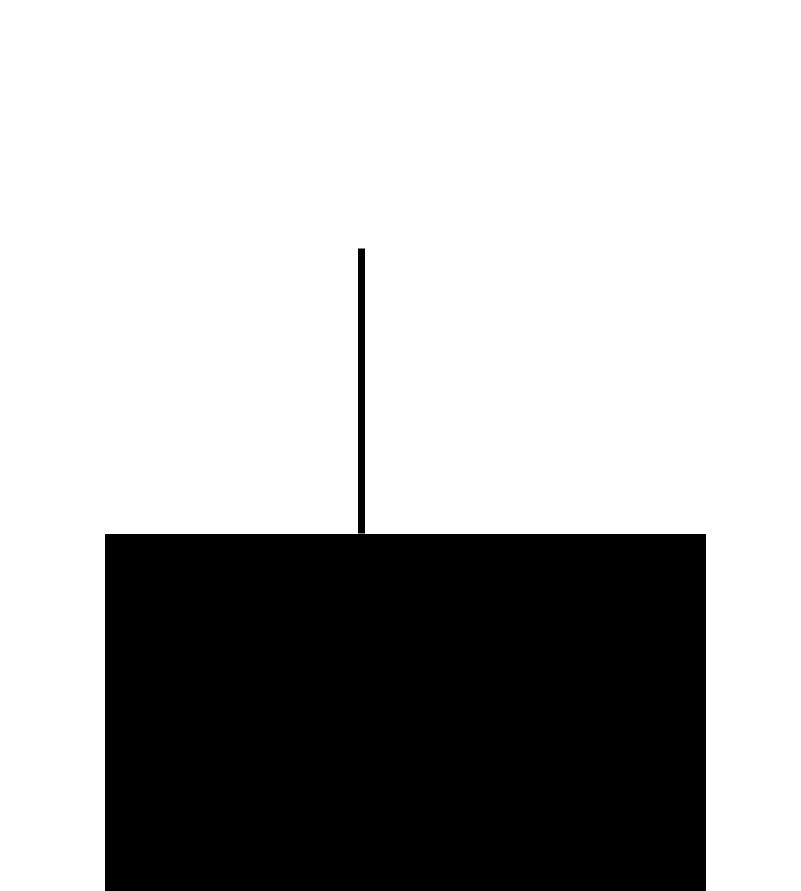
DISASSEMBLY INSTRUCTIONS
I. Shifting Controls
Gear Shift Lever ----
/Gear Shift Lever Housing
Shift Bar Housing
Low Gear Air System
(T-955ALL MODELS)
15
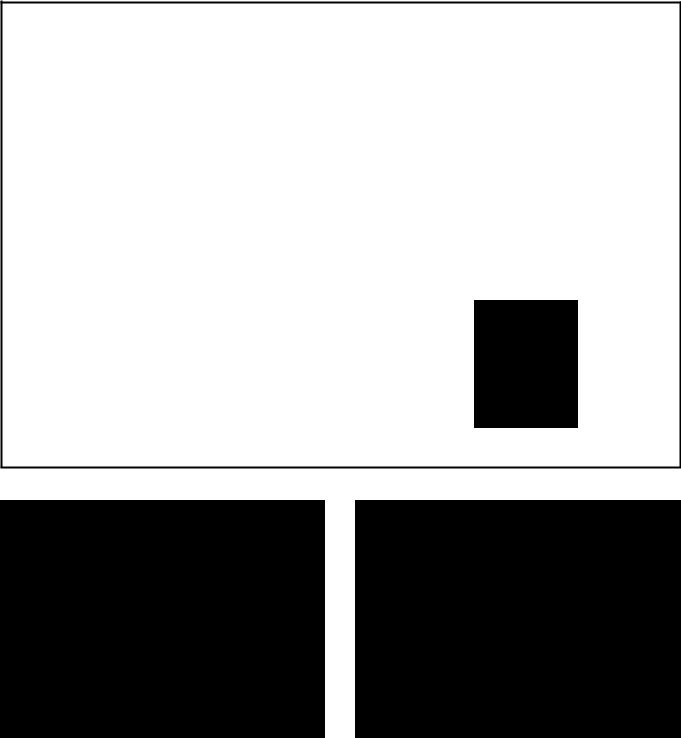
l·HfHH,,'MW__________________
A. Removal of the Low Gear Shift Air System (T-955ALL Models)
|
Capscrew |
|
|
|
|
|
LowGearShift ~ |
|
(2) |
|
|
|
|
|
|
|
|
|
|
|
Coo"ol V•"'•-- u- |
|
|
|
|
|
|
11 |
|
|
|
|
|
Filter Bracket |
|
|
|
|
|
|
|
|
|
|
|
|
|
|
i i |
|
Reducer Bushing |
|
|
|
|
• +·Tee Fitting |
\ |
~ |
|
|
|
|
|
|
|||||
Y." l.D. Air Lines \___ |
-o-u-RmnIF'- |
'-Air Filter |
||||
l. |
. |
uI |
U-BoU |
|||
'--- |
--------. |
|||||
|
|
|
|
|
|
Y." I .D. Air Line |
~'\''
L~G~'Shrr. Cyllod" c~"~'icj
1.Disconnect the air line between the tee fitting forward of the air filter and the low gear shift cylinder.
2.Turn out the two capscrews and remove the air filter and bracket assembly. For disassembly and maintenance of the filter, refer to page 94.
16
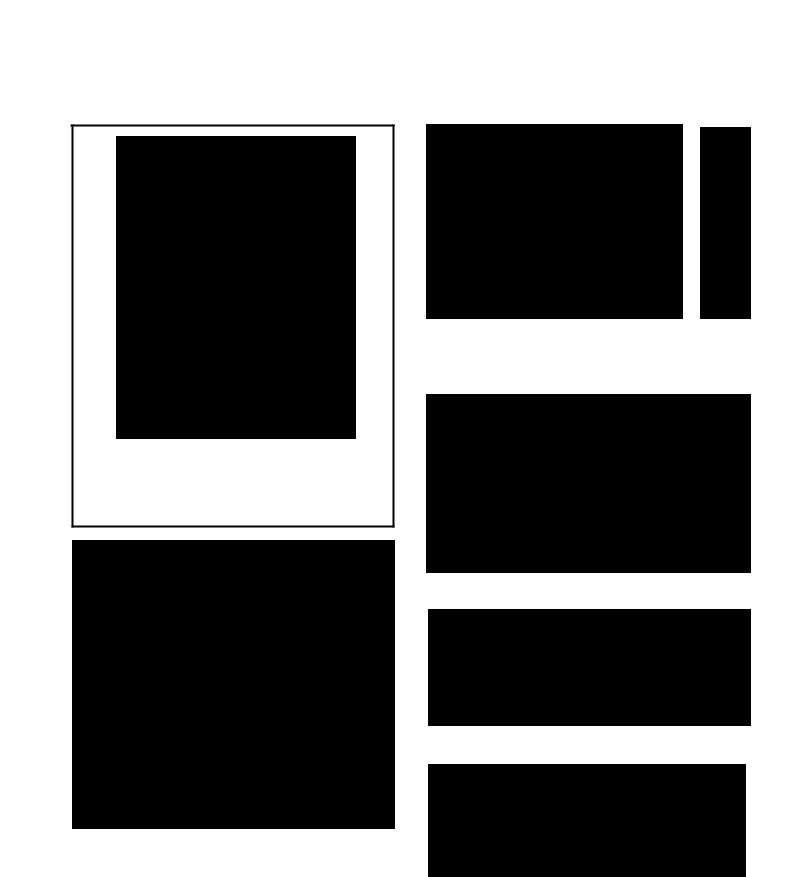
B. Removal and Disassembly of the Gear Shift Lever Housing Assembly
ca Tension Washer
~';:;;,,;o" Spd,_
1.Turn out the four capscrews, jar lightly to break the gasket seal and lift the gear shift lever housing from the shift bar housing. Turn the shift hall from the lever and remove the rubber dust protector.
2.Mount the assembly in a vise, upside down, by the housing and using a large, heavy-bladed screwdriver, pry the tension spring up and over the lugs in the housing, one coil at a time. Remove the spring from the housing.
3.Remove the tension spring washer from the housing and pull the lever up and from the housing.
4.If necessary, remove the nut, pivot pin and washer from the housing.
5.Remove the 0-ring from the groove in the top of the housing.
17

C.Removal and Disassembly of the Shift Bar Housing Assembly
--Capscrews
-Tensions Spring Cover
Plug |
11 / |
Tension Springs (41 |
|
|
|
||
@ |
|
|
|
1 |
|
Tension Balls (41 |
|
|
' |
I/ @Plug |
|
GasketO |
00 |
||
/e |
|
00 |
Shift Bar Housing |
|
|
||
Reverse~ |
|
/ |
|
Light |
|
|
|
Pin |
|
|
|
Capscrew |
I |
|
|
(161 |
|
|
|
/ |
|
|
|
Gasket
1st Low Reverse Shift Bar |
|
|
|
|
And Yoke |
|
~/ |
|
|
Reverse - 2nd Speed~~ |
|
|
||
Block, Bar and Yoke |
' |
|
|
|
|
|
~ |
\ |
Lockscrew |
3rd - 4th Speed Shift |
----~~ |
|||
Bar and Yoke |
|
|||
|
|
|
|
lunger |
|
|
|
\ |
-Spring |
|
|
|
|
--Plug |
18
1.Tum out the two retaining capscrews and remove the tension spring cover.
2. Remove the four tension springs.
3.Use a magnet to remove the four tension balls located under the springs. If a magnet is not available, remove the halls by tipping the housing after it has been removed from the transmission.
4.If necessary, remove the reverse light pin and plug from the housing.
5.If necessary, use pilers or vise-grips to remove the air breather.
6.Tum out the 16 retaining capscrews, jar to break the gasket seal and lift the shift bar housing from the transmission.
19
C. Removal and Disassembly of the Shift Bar Housing Assembly - continued
NOTE: In the following steps for ease of reassembly, place all parts in their order of rentoval on a clean workbench, placing the correct shift yokes and blocks on each bar. Bars not being removed must he kept in the neutral position or interlock parts will lock the bars, preventing removal.
7.Mount the shift bar housing in a vise with the shortest shift bar to the top and cut all lockwires. Tum out the lockscrew and pull the short (5th-6th speed) shift bar from the shift yoke and web of the housing. If necessary, use a screwdriver to tum out the plug and remove the spring and plunger from the shift yoke.
9.Turn out the two lockscrews and pull the 2nd-reverse shift bar from the web of the housing and the shift yoke and block.
10.Turn out the two lockscrews and pull the 1st-low reverse shift bar from the web of the housing and the shift yoke and block.
8.Turn out the lockscrew and pull the 3rd-4th speed shift bar from the yoke and web of the housing. As the bar clears the web the interlock pin will fall from the bore in the bar.
11.Three interlock balls are located in the web of the housing. These will fall from the web as the last shift bar is removed or may have to he removed from the web.
20
12.Mount the 1st-low reverse shift block in a vise and remove the two sets of lockwires.
13.Turn out the two lockscrews evenly and remove the spring retaining plate.
14. Remove the two springs from the bores.
15.Turn out the two lockscrews and remove the block retaining plate.
16.Remove the two blocks and remove the interlock pin from each block.
21

'·BiHi+"M1lli'NNh.iiH'·1·B+b'+'·m11iM.t.iiifiiiifBiiii"+I...___________
•
II.Clutch Housing, Companion Flange and
Auxiliary Section
A. Removal of the Clutch Housing
1.If so equipped, remove the upshift clutch brake as· sembly from the front bearing cover.
3. Use a rubber mallot to tap the clutch housing forward and off the front bearing cover and studs.
2.Turn out the four bolts and six nuts which attach the clutch housing to the transmission.
22
Disassembly - Clutch Housing, Companion Flange, Auxiliary Section
B. Removal of the Companion Flange or Yoke
1. Turn the elastic stop nut from the output shaft.
C. Removal of the Auxiliary Rear Section
1.Turn out the 19 capscrews retaining the auxiliary section to the front case.
NOTE: With T-955AL and GL series transmissions, it may be necessary to remove the plate located at the top right corner of the auxiliary section to allow access to the top right retaining capscrews.
2.Insert three puller screws in the tapped holes in the flange of the auxiliary section and tighten evenly to break the gasket seal and move the rear section away from the front case. Move the rear housing back approx· imately Y2".
2.Pull the companion flange or yoke from the splines of the output shaft and remove the speedometer drive gear or spacer from the flange or yoke.
3.Remove the puller screws and attach a hanger bracket to the top of the rear housing. Use a chain hoist to move the rear housing off the front case dowel pins.
NOTE: It is advisable to re-install the elastic stop nut on the output shaft to avoid damage to the threads.
23
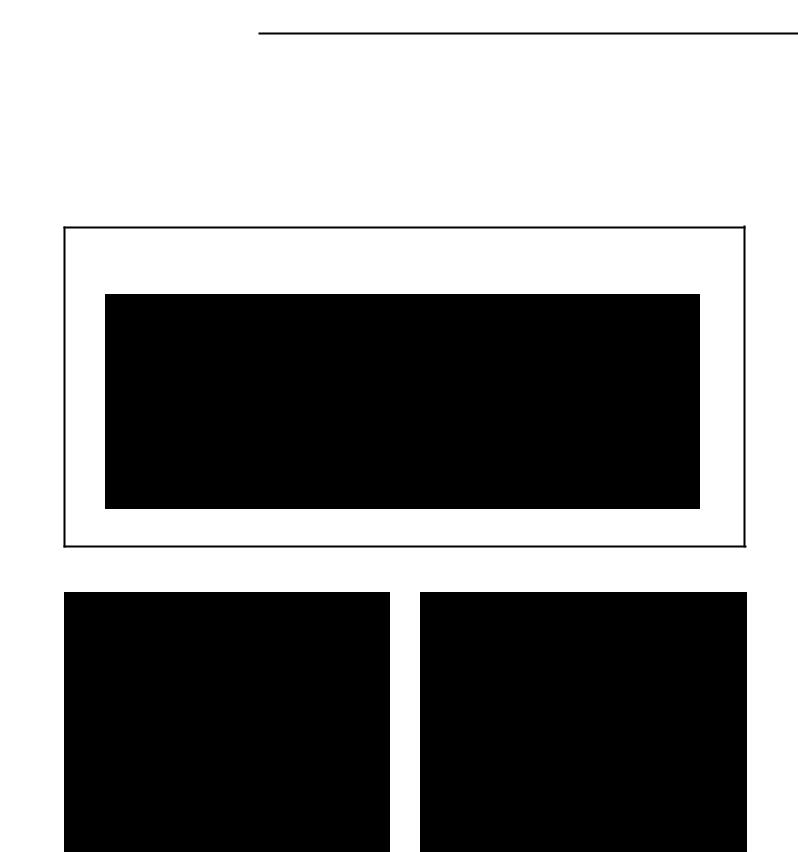
Ill. Front Section
A. Removal and Disassembly of the Auxiliary Drive Gear Assembly
Retaining
Snap Ring
Bearing Retaining Snap Ring |
Capscrew (6) |
1.Cut the two lockwires and turn out the six capscrews retaining the auxiliary drive gear assembly to the front case.
2.Remove the snap ring from the groove in the rear of the mainshaft.
24
3.Insert three puller screws in the tapped holes of the retaining ring and tighten evenly to move the assembly to the rear and from the case bore.
4.Remove the snap ring from the groove on the front of the auxiliary drive gear.
5.Support the assembly in a vise by the retaining ring and use a mall and driver to drive the gear down and from the hearing. This will free the retaining ring.
25

B. Removal of the Left Reverse Idler Gear Assembly
Bearing Inner Race
Needle Bearing \
\
Rear Washer
1. Remove the snap ring from the ID of the hub of the |
3. Remove the elastic stop nut and washer from the end of |
mainshaft reverse gear. |
the idler shaft. |
2.Move the reverse gear forward on the mainshaft and against the 1st speed gear, engaging the splines of both the reverse and 1st speed gears with the splines of the sliding clutch gear.
4.Use inside jaw pullers to remove the left auxiliary countershaft front bearing from the case bore. The right auxiliary countershaft front bearing may also be removed at this time.
26
5.Remove the plug from the end of the idler shaft and insert an impact puller in the tapped hole. Hold the gear and thrust washer in place inside the case and pull the idler shaft to the rear and from the case.
6. Remove the gear and thrust washer from the cas".
7. Remove the idler rear washer from the case.
8.Remove the hearing inner race from the idler gear. If necessary, press the hearing from the gear.
27
